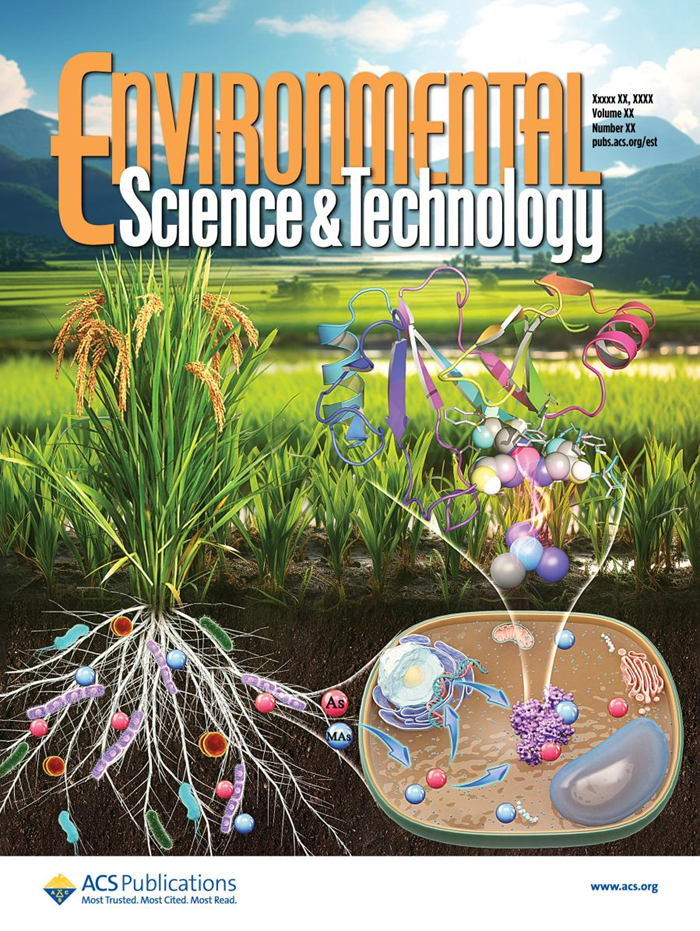New microbial arsenic resistance mechanisms contribute to green remediation of contaminated farmland
Recently, the Innovation Team of Remediation of Degraded and Contaminated Farmland from the Institute of Environment and Sustainable Development in Agriculture, Chinese Academy of Agricultural Sciences has made new progress, revealing the molecular mechanisms of microbial arsenic resistance and accumulation. The related findings have been published as a cover paper in the Environmental Science & Technology .
Arsenic in flooded paddy soils mainly takes the form of the more toxic arsenite (AsIII) and methylarsenite (MAsIII). Rice rhizosphere is a hotspot for As uptake, and an active zone for various microorganisms. Yet little is known about how eukaryotic microorganisms in the rhizospheres of rice respond to As toxicity in paddy soils, and how to develop green remediation technologies by using As-resistant microorganisms needs to be further studied.
This study discovered a new metal-binding protein TaGlo1, derived from Trichoderma asperellum SM-12F1, which could effectively mitigate AsIII and MAsIII toxicity to fungi. Compared with the existing binding proteins, TaGlo1 had a stronger arsenic binding strength and stability, and recombinant Escherichia coli carrying Taglo1 could better resist environmental arsenic toxicity and increase intracellular arsenic accumulation. Three cysteines within TaGlo1, Cys13, Cys18 and Cys71, mainly participated in binding with AsIII, while Cys13 and Cys18 mainly participated in binding with MAsIII. In addition, the study also found that Taglo1 was widely distributed in the paddy soils of China's 14 typical farming areas, and its gene abundance increased significantly with pore water As. The results further demonstrated the potential of the fungi-derived Taglo1 for alleviating As toxicity in the soil-rice system, which can be helpful for future application to the green remediation of As-contaminated paddy soils through bioengineered bacteria, amplification of functional genes in rhizospheres and other methods.
This research was funded by the National Natural Science Foundation of China and the Agricultural Science and Technology Innovation Program of the Chinese Academy of Agricultural Sciences.
Linkage: https://pubs.acs.org/doi/10.1021/acs.est.3c11043

-
 Apr 18, 2024Opening Ceremony of the Training Workshop on Wheat Head Scab Resistance Breeding and Pest Control in Africa Held in CAAS
Apr 18, 2024Opening Ceremony of the Training Workshop on Wheat Head Scab Resistance Breeding and Pest Control in Africa Held in CAAS -
 Apr 03, 2024IPPCAAS Co-organized the Training Workshop on Management and Application of Biopesticides in Nepal
Apr 03, 2024IPPCAAS Co-organized the Training Workshop on Management and Application of Biopesticides in Nepal -
 Mar 28, 2024Delegation from the School of Agriculture and Food Science of University College Dublin, Ireland Visit to IAS, CAAS
Mar 28, 2024Delegation from the School of Agriculture and Food Science of University College Dublin, Ireland Visit to IAS, CAAS -
 Mar 25, 2024Director of World Food Prize Foundation visited GSCAAS
Mar 25, 2024Director of World Food Prize Foundation visited GSCAAS -
 Mar 20, 2024Institute of Crop Sciences (ICS) and Syngenta Group Global Seeds Advance Collaborative Research in the Seed Industry
Mar 20, 2024Institute of Crop Sciences (ICS) and Syngenta Group Global Seeds Advance Collaborative Research in the Seed Industry
